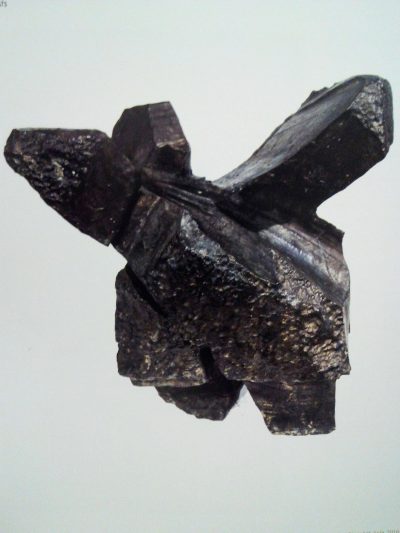Grace Ko
“Hell is in the living world, but the living world also has a paradise. Which way would you go? It’s your choice entirely.” The eminent Taiwanese sculptor Ju Ming wrote these thoughts about life at his first solo exhibition in Hong Kong in 2014. His artworks are inspiring and the path in his artistic career has run parallel with his Buddhist education.
As with most successful people, Ju Ming experienced a tough period and invested effort and hard work into building himself up as an internationally recognized artist. He was an ambitious craftsman and ran his own flourishing carving business before the age of thirty. But his success didn’t last long, failing because of the over-expansion of his business. This blow to his career made him rethink his life but he decided to be an artist. He worked as an apprentice under a renowned Taiwanese sculptor Yuyu Yang. After an eight-year apprenticeship, his teacher Yang taught him the “throwing away” principal: throw away skills and styles in the mind; discard forms; banish reality; and preserve the spirit.
Yang’s “throwing away” idea is similar to what the Buddha taught to Subhuti in the Diamond Sutra. In the Diamond Sutra, here translated by Vietnamese Buddhist monk Thich Nhat Hanh, the Buddha explained to Subhuti, “Because that person is not caught in the idea of a self, a person, a living being, or a lifespan, he or she is not caught in the idea of a dharma or the idea of a non-dharma. He or she is not caught in the notion that this is a sign and that is not a sign. Why? If you are caught in the idea of a dharma, you are also caught in the ideas of a self, a person, a living being, and a lifespan. If you are caught in the idea that there is no dharma, you are still caught in the ideas of a self, a person, a living being, and a lifespan. That is why we should not get caught in dharmas or in the idea that dharmas do not exist. This is the hidden meaning when the Tathagata says, ‘Bhikshus, you should know that all of the teachings I give to you are like a raft.’ All teachings must be abandoned, not to mention non-teachings.”
The Buddha said that all the teachings he gives are like a raft. All teachings must be abandoned, as well as non-teachings. It is not easy to understand the exact meaning of this gatha. However, it has parallels to Ju Ming’s story. Ju followed his teacher Yang’s “throwing away” advice and eventually abandoned what he learnt from Yang. Yang’s teachings were just a raft for Ju to develop his own unique style of art.
When viewing Ju Ming’s artworks, you feel touched by his understanding of life, especially his Living World Series. He transformed himself from a skilled craftsman to a great artist in sculpture, discarding any forms and methods, and developing his own spiritual pieces of sculpture. Reaching this level of achievement requires more than just perseverance in art. It is about comprehending all the lives in the world and caring about our own stories.

